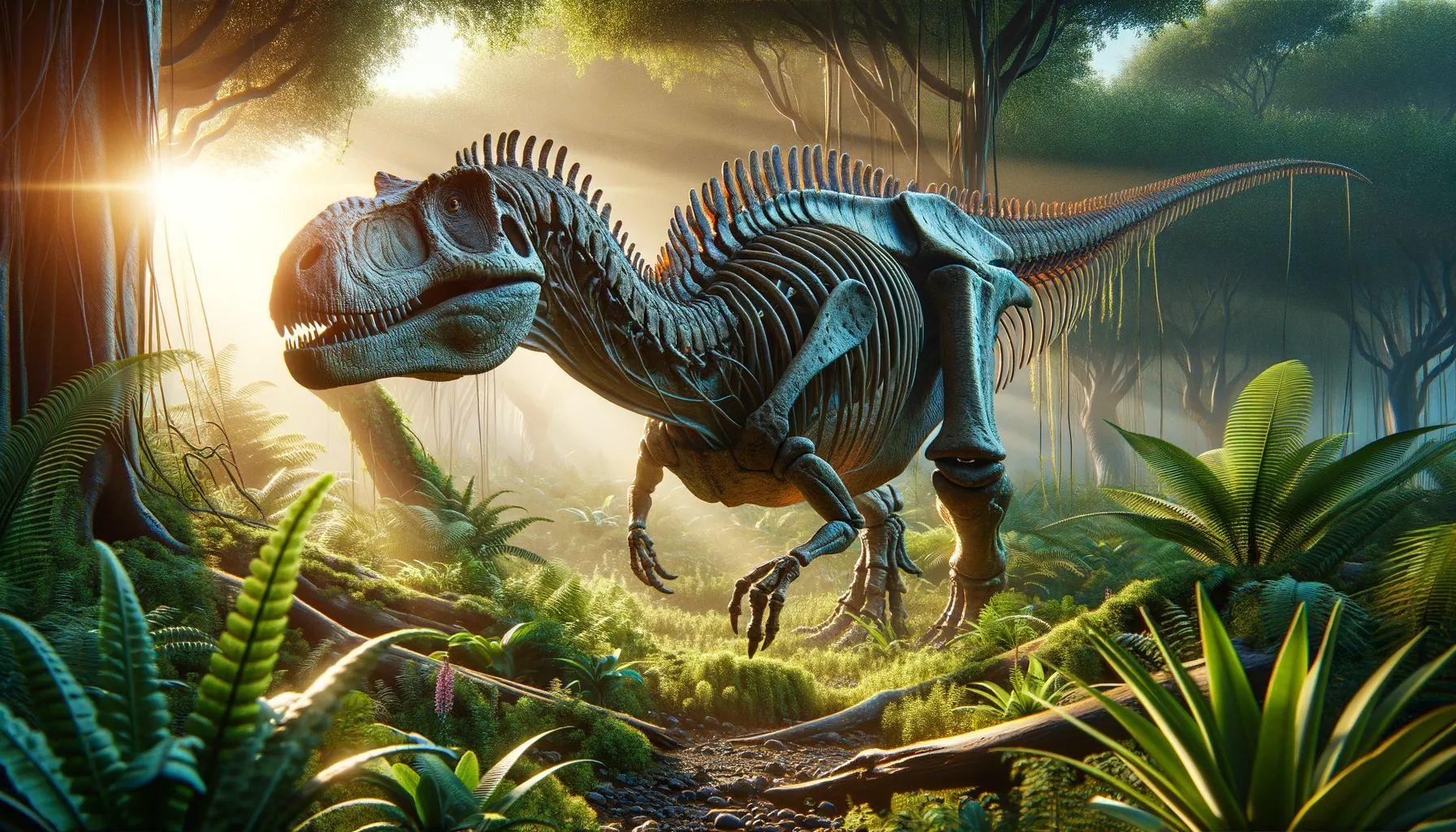
Amphisaurus
Gentle giant of the Jurassic world!
Period
Jurassic
Length
Reached lengths of up to 8 meters.
Height
About 2.5 meters tall.
Weight
Approximately 1,000 kilograms.
Amphisaurus was an extraordinary dinosaur from the Jurassic period, known for its distinctive skeletal features and herbivorous diet. Unlike the fearsome predators of its time, Amphisaurus moved slowly across its environment, feeding on a diverse array of plants. It was a vital part of its ecosystem, showcasing unique adaptations that contributed to its survival. Fossils of Amphisaurus have provided invaluable insights into the ancient world, revealing much about the landscape it once roamed.
Diet
Amphisaurus was primarily herbivorous, feeding on a variety of plant life, including leaves, stems, and possibly conifers. Its diet allowed it to thrive in lush, vegetative environments, contributing to the maintenance of its ecosystem.
Hunting
Being an herbivore, Amphisaurus did not engage in hunting. Instead, it focused on grazing on plant matter to sustain itself in its environment.
Environmental challenges
Amphisaurus faced challenges such as changes in climate and vegetation that affected its food sources. It also had to adapt to periods of drought or changes due to natural disasters like volcanic eruptions. Predatory threats from carnivorous dinosaurs also posed risks that required constant vigilance.
Speed
Amphisaurus was quite slow, walking at a relaxed pace.
Lifespan
It lived for about 15 to 25 years.
First discovery
First remains were uncovered in Europe during the 19th century.
Fun Facts
- Amphisaurus was a dinosaur that lived around 200 million years ago during the early Jurassic period.
- The name 'Amphisaurus' means 'double reptile,' named because of its unique skeletal features.
- Amphisaurus was a small dinosaur, roughly the size of a large dog, which made it quite agile.
- Fossils of Amphisaurus have been found primarily in what is now Europe, giving insights into the region's prehistoric life.
- This dinosaur is believed to have been a herbivore, feeding mostly on plants and vegetation during its time.
- Due to its size and diet, Amphisaurus likely had few predators, allowing it to thrive in its environment.
- Amphisaurus had long legs, which suggests it was a fast runner, likely an adaptation to escape threats and find food efficiently.
Growth and Development
Young Amphisaurus were vulnerable to predators, requiring growth in safer, more sheltered parts of their habitat. Rapid early growth was important to achieve size that discouraged predators. They underwent significant development in body structure to equip them for survival in their ecosystem.
Habitat
Amphisaurus inhabited dense forest regions and open floodplains. Their environment provided ample food resources and space for their large size. Seasonal changes in habitat required them to potentially migrate short distances to find adequate sustenance.
Interaction with other species
Amphisaurus coexisted with various other dinosaur species, including both herbivores and carnivores. It shared grazing areas with similar herbivorous species, and was often cautious of the more aggressive meat-eaters of its time. Its interactions were primarily non-confrontational, focused on survival and resource management.
Natural lifespan
Amphisaurus generally lived around 15 to 25 years in the wild.
Reproduction
Amphisaurus likely laid eggs in secluded, protected areas to avoid predators. Parental care, if any, remains uncertain, although some adults may have guarded nests until hatchlings emerged. Reproductive success was crucial for sustaining population numbers.
Social behaviour
Amphisaurus may have exhibited some social behaviors, such as moving in small herds to protect against predators. Its social structure likely involved group foraging and protecting the young. Communication among individuals could have played a role in their collective behaviors.
Fossil locations
Fossils of Amphisaurus have been found primarily in European territories. These findings have significantly contributed to knowledge about Jurassic dinosaur dispersal. The remains include partial skeletal structures, offering insights into its physiology and lifestyle.
